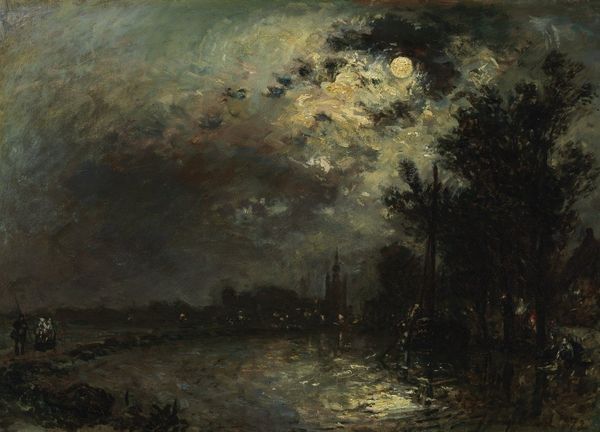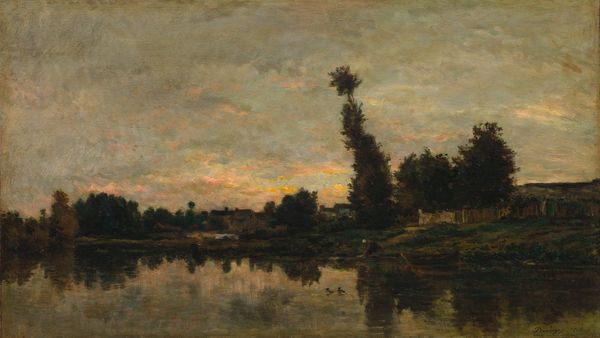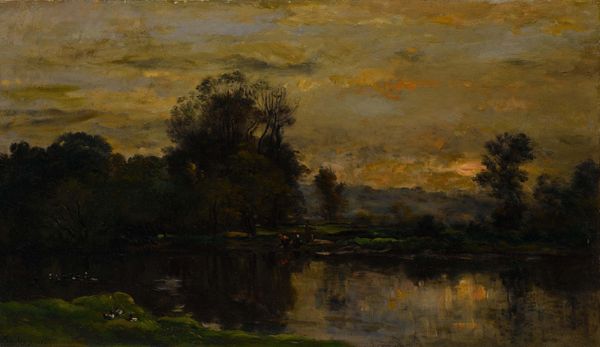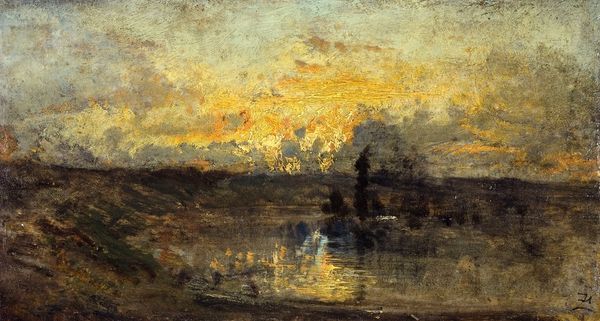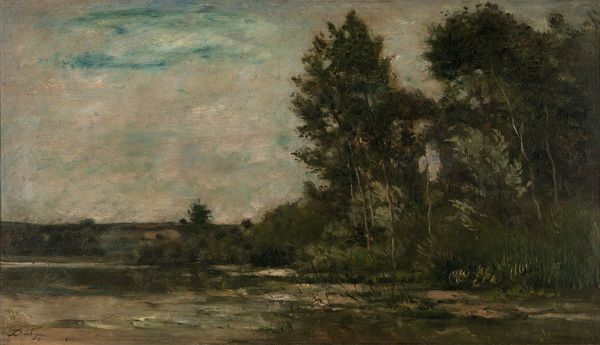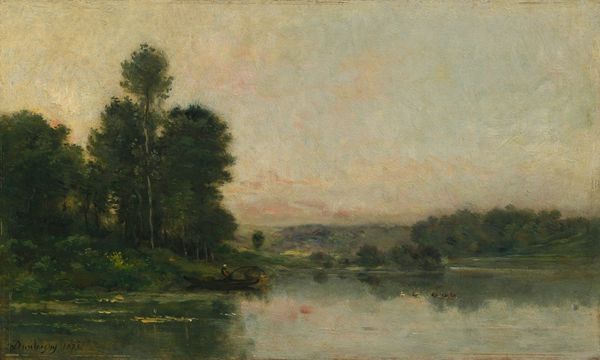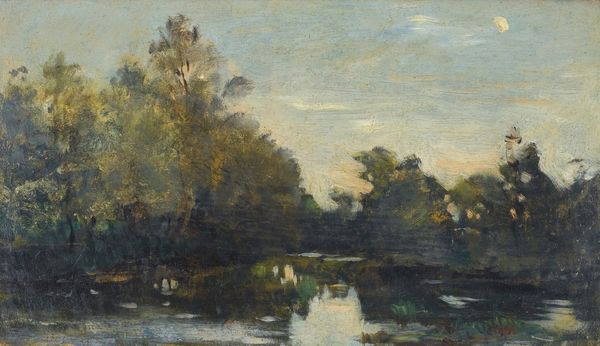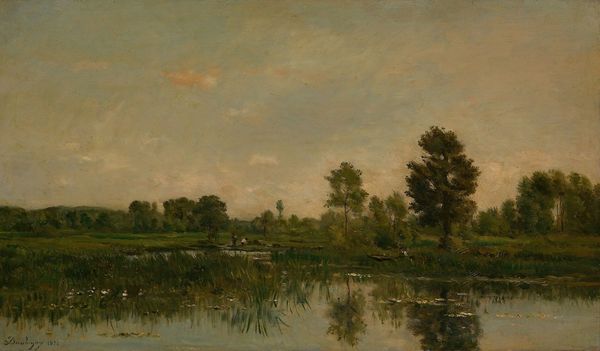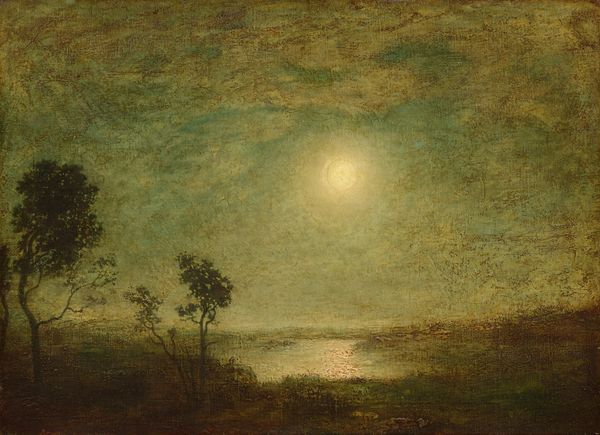
Dimensions: 40 x 66.5 cm
Copyright: Public domain
Curator: Charles-François Daubigny created this evocative oil painting, titled "Riverbank in Moonlight," in 1875. It resides now in a private collection. Editor: It’s amazing, this liminal space caught between day and night, full of such palpable calm. The strokes are so loose; I wonder if this was entirely en plein air? You can almost feel the moisture in the air. Curator: Undoubtedly a testament to the Barbizon school's dedication to nature. Notice how the moon, the focal point, is veiled, not dominant, a softened celestial orb. I see layers of symbolism. The water often representing the unconscious, the moon female energy, the cyclical and emotional. Editor: I’m struck by Daubigny's almost reckless application of paint; so much impasto in the clouds around the moon. He’s manipulating the very substance of oil to evoke light – or rather, the *idea* of light. Did he grind his own pigments? What was his studio practice? I'm guessing he came back to the studio and worked more. Curator: Daubigny greatly influenced the Impressionists. His innovative compositional techniques, especially how he treated light and shadow, set a course. Also, the ducks and that lone fisherman speak of the cyclicality of human life intertwined with nature. Think about their placement, their symbolism in relation to the great orb above and its light. Editor: I find myself wanting to know more about the production of Daubigny's paints. Access to cobalt blue, for instance, changed painting so profoundly. Was he making his own mediums, his own varnishes? How did these specific choices affect the surface quality we're observing now? Curator: An interesting line of inquiry into material culture. For me, however, there is something that echoes beyond mere landscape. There is a quality to it that is almost mythological. A scene ripe with possibility and mystery. Editor: Well, by exploring how the painting was actually made, we reveal another facet of that mythology; the physical interaction of an artist and his materials, mediated by commerce and technology of the day. Curator: A lovely and appropriately grounded perspective. I am left with that serene glow that pierces the gathering night. Editor: And I with a better sense of how material conditions shape our experience.
Comments
No comments
Be the first to comment and join the conversation on the ultimate creative platform.
